Federation of Australia - Part 3: 1901-1914
Overview
The Commonwealth of Australia came into being on Tuesday 1 January 1901. The Federation Pavilion in Sydney’s Centennial Park was the focus of the inauguration ceremonies. The Proclamation of the Commonwealth of Australia was read. Australia’s first Governor General, Lord Hopetoun, was sworn in, as was the first (interim) ministry with Edmund Barton as interim Prime Minister. The Sydney celebrations, which included an elaborate street parade from Martin Place in the City to Centennial Park, were followed by a week of festivities. Celebrations took place across the State in centres large and small.
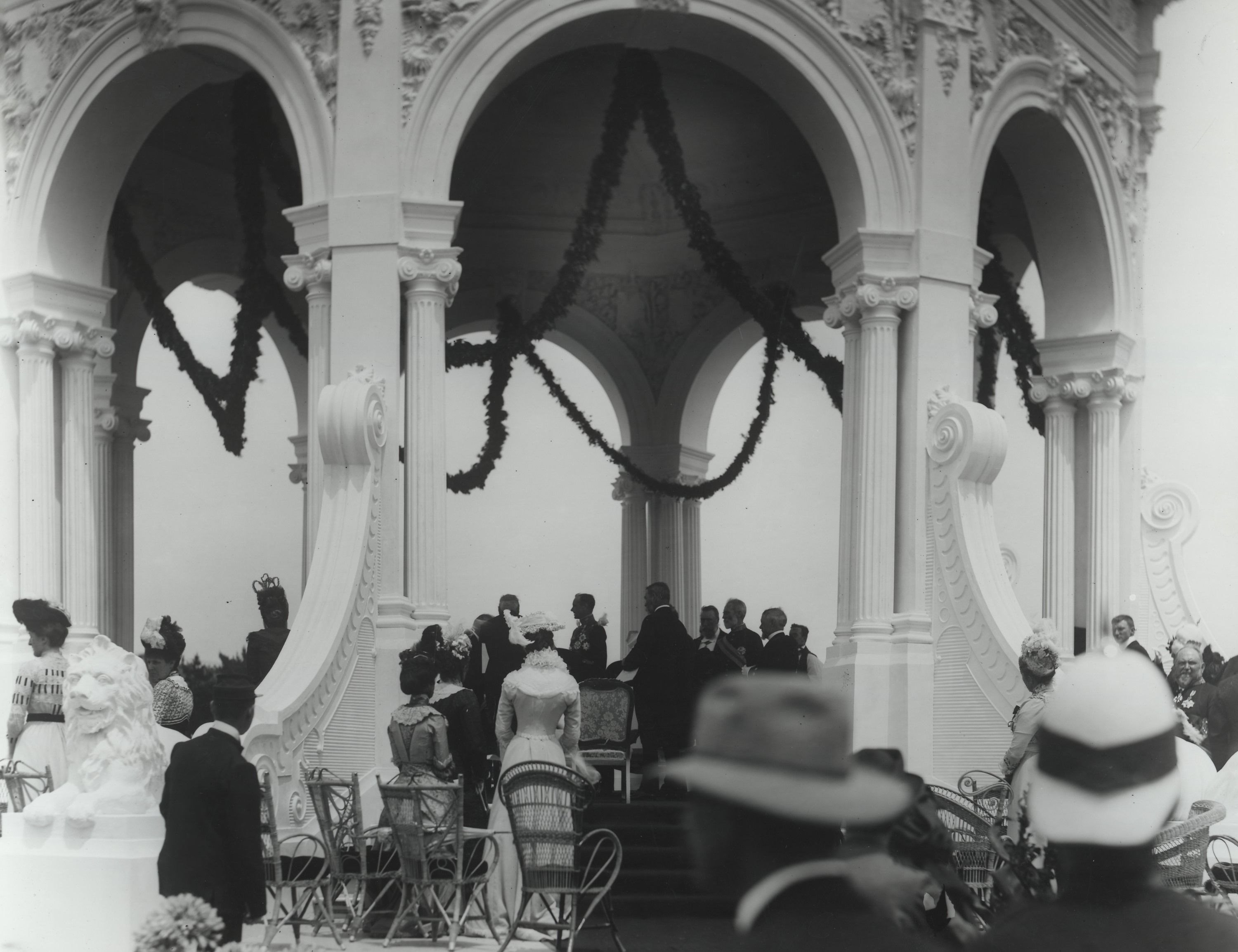
Celebrating federation
The Commonwealth of Australia was proclaimed on 1 January 1901. The Federation Pavilion in Sydney’s Centennial Park was the focus of the inauguration ceremonies and a five mile procession through the decorated streets of Sydney was greeted by large crowds
Federal election
On 20 March 1901 the first federal election was held with political contestants including the free traders (Reid and Forest) and the Protectionists (Barton and Deakin) and the Australian Labor Party1. The Constitution enfranchised those people who had the right to vote for the lower house of their own State Parliaments2this in effect meant that ‘those Aboriginal people who had voted in South Australia, New South Wales, Victoria and Tasmania as well as women in South Australia and Western Australia voted in the first federal elections’.3 The Commonwealth Franchise Act 1902 extended the vote to all women but denied it to Aboriginal people. It was not until an amendment to the Commonwealth Electoral Act in 1962 that all Aboriginal people could vote. Edmund Barton was returned in March 1901 as the first Prime Minister, an office he held until 1903 when Alfred Deakin became Australia’s second Prime Minister.
The visit of the Duke and Duchess of Cornwall and York to New South Wales in May and June 1901 gave the people of New South Wales another opportunity to celebrate and to decorate the streets of Sydney with greenery and bunting. They also visited Brisbane, Hobart, Adelaide and Perth on their Royal Tour of Australia.
Commonwealth responsibilities
The colonies had now became States and regular Premiers’ Conferences were held from 1901 onwards where the Prime Minister and State Premiers could meet to discuss important issues. The transfer of powers, functions and property to the Commonwealth Government began. Defence, postal and customs functions were amongst the first. As provided by section 84 of the Constitution, as departments of public service of the States were transferred to the Commonwealth, all officers of the department also came under the control of the Commonwealth, thus beginning a Commonwealth Public Service. Interstate free trade, which had been one of the burning issues of the federation movement, was quietly established and the first federal tariff was introduced in 1902. Other responsibilities such as naturalization (1904), trademarks and patents (1905), copyright (1912) and lighthouses (1915) took longer. The Commonwealth Government embarked on a massive public works program including ‘a Federal capital, a transcontinental railway and damming and locking the Murray River’.4
The framework for the new nation’s immigration policy was also established. The Commonwealth Parliament in its first year passed two acts which firmly established the legislative basis of the ‘White Australia’ policy, the Immigration Restriction Act which included a dictation test and the Pacific Island Labourers’ Act. The Immigration Restriction Act had the effect of excluding immigrants from Asian countries for over fifty years.
Though the Commonwealth Government assumed defence powers the States continued to raise contingents for the war in South Africa as a Commonwealth Defence Department was not formed until 1903.5 Nevertheless the first federal troops embarked for South Africa as the Australian Commonwealth Horse from December 1901.6 Peace was signed on 31 May 1902.
Federation also established a number of functions based on State initiatives. The Conciliation and Arbitration Court was established in 1904 and handed down the first federal basic wage in 1907. In 1907 Alfred Deakin invited the American fleet to visit Australian ports and the visit in 1908 was much celebrated as it was the first goodwill visit to Australia by a foreign fleet. The Commonwealth Government introduced invalid and old age pensions (already in existence in NSW and Victoria) in 1908. Australian banknotes were issued and the Commonwealth Bank established in 1912.
A search for a federal site
While the Commonwealth Government was establishing its powers and functions the search for a federal capital was also underway. The site of the federal capital was of such importance in New South Wales that it is considered to be a contributing factor to the colony voting ‘Yes’ to federation in the 1899 referendum. New South Wales had been promised in 1898 that the federal capital would be within its boundaries but not within 100 miles of Sydney.
The Commonwealth Parliament was to select the site and would meet in Melbourne until a capital was provided. New South Wales set up a Royal Commission in 1899 to find a suitable site and the Commonwealth did the same in 1903. Despite many suggestions and lobbying for various sites from local federal capital leagues, politicians and the press, a site could not be agreed on and all choices were hotly debated until the Yass–Canberra district was finally selected. Walter Burley Griffin won an international competition in 1912 to design the capital but the official name of the capital was not known until the name of Canberra was announced by Lady Denman in 1913. It was not until 9 May 1927 that the Commonwealth Parliament was formally opened in Canberra.
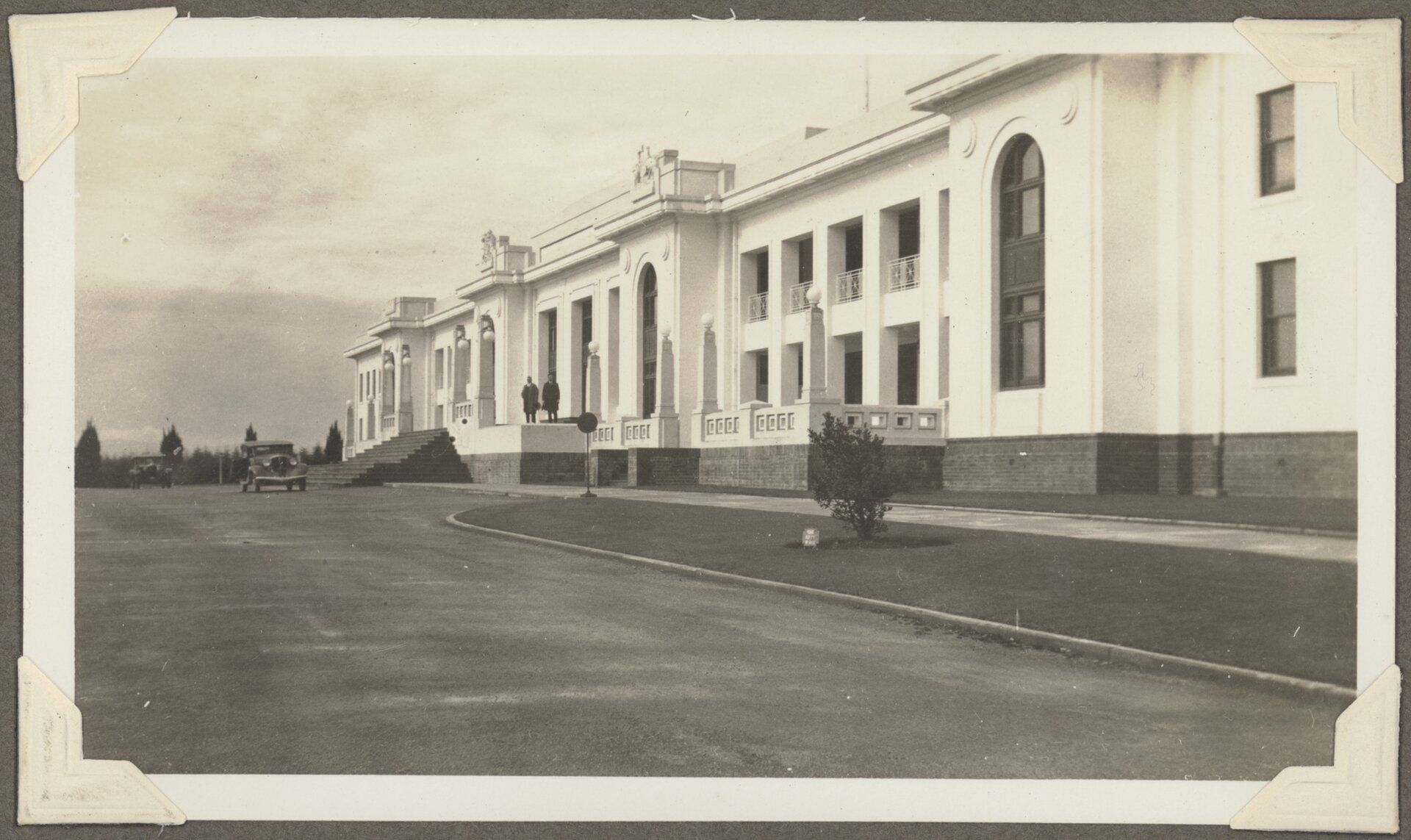
Canberra – the federal capital contest
This record series from the State Archives Collection sheds light on the proud efforts a number of towns, villages and other areas took to present their submissions to become the capital of the new Commonwealth
A select list of records
Board of Health
NRS-593 Quarantine books, 1881-1915
[5/5853-5854]
- Item [5/5853] 1881-1900 consists of copies of various documents concerned with quarantine matters. It includes papers from intercolonial conferences on quarantine, 1896, 1900 and the Federal Quarantine Conference, 1904.
- Item [5/5854] 1900-15 is indexed and covers a wider range of matters, 'quarantine' of isolation of persons, buildings and areas in addition to ship quarantine reflecting the impact of the Plague epidemic of 1900 and the effect of federation on quarantine questions.
Botanic Gardens
NRS-13111 Special file re improvement of Government House Grounds, Cranbrook, 1905–18
[3/3095]
These are papers, relating mainly to a motion by Mr Briner in the Legislative Assembly (1905) for a return, which shows: the total cost of repairs, maintenance and wages in connection with the Governor-General’s residence and grounds from 1 July 1901 to date, each year to be shown separately; the proportion of this sum which is paid by the people of New South Wales; the total period during which the Governor-General has occupied the place during the time stated: the total cost to date of Cranbrook, the State Governor’s residence and grounds; and the total cost of the State Governor’s residence and grounds at Moss Vale for the five years ending 30 June 1905, the cost of each year to be shown separately. Papers relating to the subdivision of the Cranbrook Estate in 1917 are also included.
Bureau of Statistics
NRS-685 Collectors’ books, 1901 Census
Fiche 1007–1211, [2/8430–76]
The Collectors’ books show householders’ names and it is the last census remaining in the State’s possession. From 1911 the Commonwealth assumed responsibility for census collection. This census is also significant because it was taken in the year of federation—three months after the proclamation of the Commonwealth of Australia.
See more about the 1901 Census
NRS-690 ‘Results of a Census of New South Wales taken for the night of the 31 Mar, 1901’
This is a published report of the 1901 census, and gives statistical tabulations for the information collected. This volume was published in 1904.
NRS-696 'The Seven Colonies of Australasia', also called 'A Statistical Account of Seven Colonies of Australasia', 1890-96, 1901-02
[6/5601 part-5602 part]
Colonial Secretary
These are examples of the important documents which can be located in the main correspondence series:
Writ of election issued by His Excellency the Lieutenant Governor, with the advice of the Executive Council, in connection with the election of six Senators for the State of New South Wales to serve in the Parliament of the Commonwealth of Australia.
This accompanies a letter dated 5 March 1901, M20725/1 in [5/6650].
Minute Paper for the Executive Council concerning the issue of a proclamation declaring valid the election of the six Senators for the State of New South Wales to serve in the Parliament of the Commonwealth of Australia 23 April 1901. Includes the proclamation signed by His Excellency, The Honourable Sir Frederick Mathew Darley … Lieutenant Governor of the State of New South Wales and John See (NSW Premier).
The proclamation notice which appeared in the New South Wales Government Gazette is also included with M20727 in [5/6650].
NRS-906 Special bundles
- Confidential printed papers, 1870–1901
[2/8095B.2]
- Federal Elections, 1901
[5/6652]
Correspondence and papers concerning the running of the federal election of 1901 in New South Wales. It is largely of a routine administrative nature from returning officers concerning polling places, ballot papers and boxes.
- Administration of British New Guinea, 1890–1901
[4/952.2, 4/953.1]
Copies of various signed and sealed ordinances and printed copies of despatches relating to the administration of British New Guinea. Records concern payment of amounts due for expenses for the administration of New Guinea by New South Wales, Queensland and Victoria, including statements showing money owed, future administration and continuing support of New Guinea.
Later correspondence includes a letter from Sir Edmund Barton, Prime Minister, concerning the matter of the deficit in the New Guinea finances, and future administration of British New Guinea in relation to land settlement and the alienation of Crown Lands in the possession.
- Miscellaneous papers, 1845–1901
[4/981.2]
Includes Proofs of the first Gazettes of the Commonwealth of Australia and of the State of New South Wales.
- Miscellaneous papers, 1803–1903
[4/7186]
Includes deeds, wills, leases, warrants and commissions appointing public servants; Charters establishing the District Councils at Merton, Muswellbrook and Parramatta; agreement over the Murray River Waters 1903; lease of Cranbrook for a Government House, 1901; Bill of sale of the Hulk of the ship Phoenix to Government 2 August 1825; Commission of Lieutenant Governor Hobson of New Zealand; and other papers.
- Transportation of convicts to New Caledonia, 1876–1904
[4/960.1]
The majority of the papers in this bundle cover the years 1876–1884 and concern the dissatisfaction of the Australian Colonies and New Zealand over escaped, pardoned or time expired French convicts coming to their colonies and their combined efforts to have the British Government intervene with the French Government on their behalf.
NRS-1138 Report of the Committee into State Properties transferred to the Commonwealth, 1903
[6/5544]
The Committee was appointed by the Premier and Chief Secretary, Sir John See, on behalf of the Government of New South Wales, to inquire into and report upon the value of State properties, prior to transfer of same to the Commonwealth (under section 85 of the Commonwealth of Australia Constitution Act, 63 and 64 Vic. C.12).
The Committee began its investigation on 7 August 1901 and presented its report on 26 October 1903. This volume of the printed report has been signed by eight of the nine Committee members.
The report details such property for transfer as: post and telegraph offices; custom houses; lighthouses and quarantine; military lands, buildings, fortifications; drill halls in country towns; and military stores. The report contains block plans of 330 sites and sketch plans of Victoria Barracks.
Department of Attorney General and Justice
The first Attorney General (Saxe Bannister) appointed in 1823 was the main legal adviser for the Crown, and was to draft legislation and act as counsel in criminal and civil cases. The inauguration of self-government for New South Wales in 1856 altered the Attorney General’s status from that of a government official to a Portfolio position. On August 1901, the Department of Attorney General and the Department of Justice were formally amalgamated into the Department of Attorney General and Justice.
In 1911 the Department of Attorney General and of Justice was divided into two branches – the Justice Branch and the Attorney General’s Branch. The Attorney General’s Branch was responsible for advising the Government on all legal questions.
NRS-333 Special bundles
- Occupation of Government House, Sydney by the Governor General, 1899–1914
[5/7767.2–7769.1]
This deals with the locality of the residence for the Governor-General in Sydney and discussions about where the ‘seat of government’ should be. There is a considerable amount of material relating to the legal case Attorney General for New South Wales and James Leslie Williams concerning the occupation of Government House and the use of the grounds.
- Payment by Commonwealth to New South Wales Government for legal work undertaken on behalf of the Commonwealth, 1902–07
[5/7745.1]
Correspondence and accounts for legal work undertaken by the New South Wales Crown Solicitor on behalf of the Commonwealth in actions and prosecutions by Commonwealth departments and conveyancing matters. There is also correspondence concerning non-payment of accounts.
- Transfer of patent and trade mark records to the Commonwealth, 1904–20
[5/7774.1]
Correspondence and papers concerning the transfer of patent records and trade mark registers to the Commonwealth and New South Wales’ dissatisfaction about their possible removal to Melbourne.
- Proposed transfer of bankruptcy administration to Commonwealth, 1906–21; 1924–28
[5/7781]
Correspondence and printed papers concerning the necessity for uniform bankruptcy laws throughout the Commonwealth of Australia, Premiers’ and interstate conferences to discuss bankruptcy and company laws, a draft Bill for an act relating to Bankruptcy, 1912, and comments on Bill. The Commonwealth Bankrupartcy Act1924 came into force on 1 August 1928, and papers concerning the proposed conversion from state to federal control are included.
Department of Public Works
NRS-12467 Plan of Federal Government House – Domain and gardens, 1912
[Plan Nos. 61073–74]
There are two sheets to this plan which shows the layout of Government House which served as the residence of the Governor General from 1901, the Domain and the Botanical Gardens.
Executive Council
NRS-4232 Minute books, 1825-1935
An almost complete record of the Minutes of the Executive Council from the time of its inception until 2007
NRS-4235 Registers of minute papers laid before the Executive Council, 1846-1909
Government Architect
NRS-4335 Cranbrook School building plans, 1902–1910
The plans are of the former private residence Cranbrook at Rose Bay, which was purchased by the New South Wales Government for use as the Vice Regal residence for the State Governor and was known as State Government House. It was sold in 1917. The building became part of Cranbrook School and the plans were held by the School for many years.
The plans originated in the Government Architect’s Office and show details, alterations and additions to the main building, out buildings and gates. They were transferred to us by Cranbrook School.
Government Printing Office
NRS-4481 Glass negatives, 1870–1988
The photographs - digitised and available to view in the catalogue - cover a wide variety of subjects. Of special note are those images of Federation decorations for the Commonwealth Celebrations in January 1901 and the visit of the Duke and Duchess of Cornwall in May 1901. Also includes images of the Parkes Ministry and Cranbrook.
Same size prints taken from the glass negatives, c.1890–c.1920 (c.1 900 prints to date).
NRS-4407 Miscellaneous letters received and sent, 1845–1941
[1/270–271 part, 7/4932]
Includes correspondence concerning printing done for the newly formed Commonwealth Government 1901–08.
NRS-4413 Letters sent to departments and government officials, 1882–1922
[1/141-88]
These letters are press copies of letters sent to government departments and government officials. Of special note are the volumes for 1900-01 concerning arrangements for Commonwealth Celebrations, the Commonwealth Gazette and federal elections.
NRS-4465 Typescript of article ‘The Australian Constitution and its operation’, by Biard d’Aunet, 1906
[1/246–47]
D’Aunet was Consul-General of France in Australia. This article was published in ‘Revue des Deux Mondes’ in 1906.
NRS-4446 Miscellaneous papers of the Postage Department, 1849-1909
[SZ34-37]
Governor
NRS-4511 Indexes and registers to despatches from the Secretary of State, 13 Oct 1837–30 Mar 1899, 11 May 1914–29 Sep 1949
NRS-4512 Despatches, circulars and cables from the Secretary of State and the Under Secretary, 6 Apr 1787–27 1806, 13 May 1809–1961, and copies of despatches to the Secretary of State, c.1906–1969, 1971
NRS-4517 Despatches from the Secretary of State for the Colonies and the Governor General of the Commonwealth of Australia, and related papers, concerning the transfer of the administration of Norfolk Island from New South Wales to the Commonwealth, 1902–14
[12/2064.1 part]
Includes papers concerning the reasons for including Norfolk Island in the Commonwealth territory such as postal arrangements, defence and the adverse effect of the imposition of custom duties on Norfolk Island’s products entering Australia. Also includes arrangements for the transfer of the administration of Norfolk Island from New South Wales to the Commonwealth of Australia. Of special note is a petition dated 6 October 1902 signed by 82 male inhabitants requesting to remain a Crown Colony.
NRS-4540 Registers of despatches from other Governors, and letters from Consuls and Diplomats, officials and private persons, 1905–35
[7/4123–28]
Chronologically arranged under the letters of the alphabet, the volumes record registered number, from whom, subject and action taken. It is an annual single number system.
NRS-4541 Despatches from other Governors, and letters from Consuls and Diplomats, officials and private persons, 1899–1935, 1936–1944, and copies of letters sent, c.1906–36
[2/8094, 7/1624–747, 12/2063.2, 12/2064.1, 12/1424.1–1428.1, 12/1438.2, 12/2063.2, 7/1624–747, 12/2063.2, 12/2064.1, 12/2066.2]
This correspondence, handled chiefly by the Private Secretary, reflects the relationship of the Governor to the people of New South Wales. The series also includes letters from the Governor General, other States’ Governors, and Consuls and diplomatic officers in New South Wales and overseas, that is all letters received by the Governor except those from the Secretary of State.
Much of the material is ephemeral – invitations, addresses of welcome, and requests from various bodies to have loyal messages conveyed to the monarch. The letters from the office of the Legislative Council relating to the transmission to the Secretary of State of Acts for ratification are included. There are also papers relating to defence and wars, eg. cables from the Casualty Department, Cape Town during the Boer War.
Copies of despatches to the Secretary of State relating to matters raised in this correspondence may also be found here and of course the opposite is the case. Also papers relating to a particular matter may be found in both series.
From 1938 to 1944 the records consist entirely of copies of minutes, despatches to other Governors and letters to private persons.
NRS-4543 Correspondence files
- Proposals regarding use of Government House and Admiralty House, 1902-33
File No. 33/690/1 in, [12/2071.2]
This bundle contains printed papers and correspondence concerning the use of vice regal residences by the Governor of New South Wales and the Governor General. There is a considerable amount of material relating to the legal case Attorney General for New South Wales and James Leslie Williams, ‘Government House Case’, 1912-1915 concerning the occupation of Government House and the use of the grounds.
Navigation Department
NRS-9794 Special bundles
- Commonwealth Inspection of State lighthouses by Commander Brewis, R.N., 1911–12
[8/2033.1]
Contains information supplied for the Prime Minister on the Lighthouses Service in New South Wales. Includes the cost of erection and upkeep of the lighthouses and particulars of fogs experienced and visibility of lights. Responsibility for lighthouses was transferred to the Commonwealth government in 1915.
Premier’s Department
The Premier’s Department was established in 1907 in connection with the Department of Attorney General and Justice, the ministerial office held by the then Premier. Until 1910 the Under Secretary for Attorney General and Justice was also Under Secretary of the Premier’s Department. The Premier’s Department was charged with departmental business connected with the State Governor’s Office, the Houses of Parliament, correspondence with the Commonwealth, State and Colonial Governments. It also had under its control the Immigration and Tourist Bureau (disbanded 1919) and the Agent General’s Office in London.
NRS-12060 Letters received, 1907–76
[9/4683–4931, 9/2167–68]
Premier’s correspondence for the period covered by this Guide may also be relevant.
NRS-12062 Indexes and registers of letters received, 1907–29
[9/1720–27, 9/1731–32, 9/1735–36, 9/1738–68, X2033–34, X2041–44]
NRS-12061 Letters received – Special bundles
- Transfer of State property to the Commonwealth, 1906–11
[7/5914 part]
Correspondence and printed papers between the Commonwealth and State Governments concerning a Bill relating to the acquisition by the Commonwealth for public purposes, transferred properties, valuations and compensation to be paid. Includes the printed Report of the Conference of Commonwealth and State Officers, Valuation of transferred properties, Melbourne, Aug 1906.
- Alterations to grounds of Government House, 1915–16
[2/1023]
Correspondence concerning the reoccupation of Government House, Sydney by the State Governor and proposed use of Cranbrook by the military and other proposals for its use, alterations to the grounds and fencing together with annotated maps. Also includes a copy of the Judgement in Privy Council Appeal No. 47 of 1914 Attorney General for New South Wales and James Leslie Williams.
- Transfer of State property to Commonwealth and question of compensation, 1906–13, 1919–24
[7/5939 part]
Correspondence with the other States and the Commonwealth concerning valuation, assessment, claims and the rate of interest to be paid as the agreed capital value of properties acquired by the Commonwealth; registration of titles and State rights to minerals in lands compulsorily acquired by the Commonwealth.
Public Service Board
NRS-12294 Special bundles
- Reports on Conference of Commonwealth and State Premiers and Ministers, 1906 and Premiers Conference, 1907
[8/387.1]
Printed Parliamentary papers concerning the conference of Commonwealth and State Premiers and Ministers, Sydney, April 1906 and report of the Premiers’ Conference held at Brisbane, May 1907.
- Royal Commission of Inquiry re Claims of Members of NSW Contingents in South Africa, 1907
NRS-1477 Minutes of evidence and proceedings of the Royal Commission of Inquiry re Claims of Members of New South Wales Contingents in South Africa, 1907
[8/385–86]
Printed papers and correspondence relating to the inquiry including a list of claims heard and a list of witnesses notified to attend. A typescript volume of minutes and evidence of the proceedings is included and copies of the printed report.
Treasury
NRS-14194 Special bundles
- Services mutually rendered by Commonwealth and State Governments, 1905–07
[10/4159 part]
Accounts and returns from various State departments for services rendered to the Commonwealth and vice versa. Also includes correspondence on a conference of federal and state officers to be held in Melbourne 9 April 1907 to discuss ways to avoid duplication of work.
- Commonwealth referendum, 1906–07
[10/4159 part]
Papers concerning the Commonwealth referendum to alter the provisions of the Constitution relating to the election of senators. Includes the writ for the referendum and voting results.
- Fortification of Albany and Thursday Island, 1889–1908
[10/4160]
Correspondence from the Australian Colonies expressing the need to federate their defences following Major General Bevan Edwards’ report; cooperation on intercolonial defence of Albany, King George’s Sound and Thursday Island (includes plans); intercolonial military conference, 1896; contributions by the Australian Colonies to the fortifications and defence garrisons at Albany and Thursday Island; valuing New South Wales’ interest when Thursday Island was transferred to the Commonwealth.
- Old age pensions, 1900–08
[10/4161.1]
Papers concerning the operation of the New South Wales old age pension scheme, and information from New Zealand and Victoria on their schemes. Also includes papers and newsclippings concerning the transfer of the scheme from State to Commonwealth. The New South Wales government first paid old age pensions in 1901 the Commonwealth took over the payments in 1909.
- Customs duties paid by State Departments, 1902–09
[10/4163]
Returns from various State government departments showing the amount of customs duties paid upon material imported by the State since the imposition of the federal tariff and monies deposited under section 167 of the Customs Act 1902.
- Papers re Commonwealth and State Relations, 1906–14
[2/8042.1]
These papers cover a wide variety of matters such as old age pensions, State loans and finance, banks, stamp duties, military matters, assistance by State officials at federal elections and payment for services rendered to the Commonwealth by the States and vice versa.
- Rent allowance to Lady Parkes, 1904–19
[10/4172 part]
Correspondence and printed papers concerning the administration and granting of an annual allowance to Lady Parkes, widow of Sir Henry, and the Parkes family and its continuance on the youngest child attaining majority.
Notes
- Australian Archives, Federation: The Guide to Records, op.cit., p.116.
- loc.cit.
- loc.cit.
- ibid., p.117.
- Craig Wilcox, The Boer War, National Archives of Australia, Canberra, 1999, p.8.
- Irving, ed., op.cit., p.339.
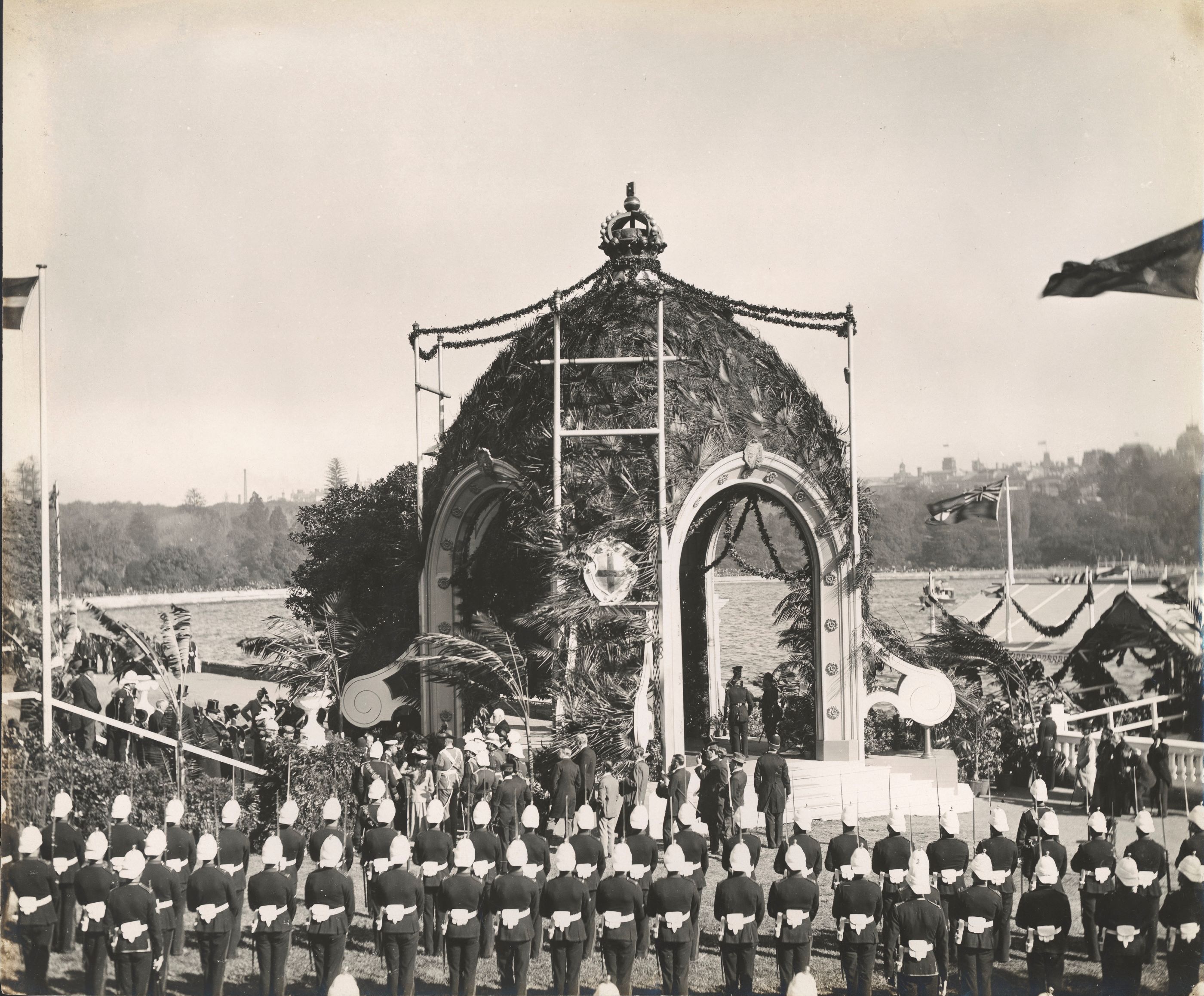
Federation timeline
Significant events in the 50 year process to federate the six Australian colonies into the Commonwealth of Australia, 1846-2001
Related
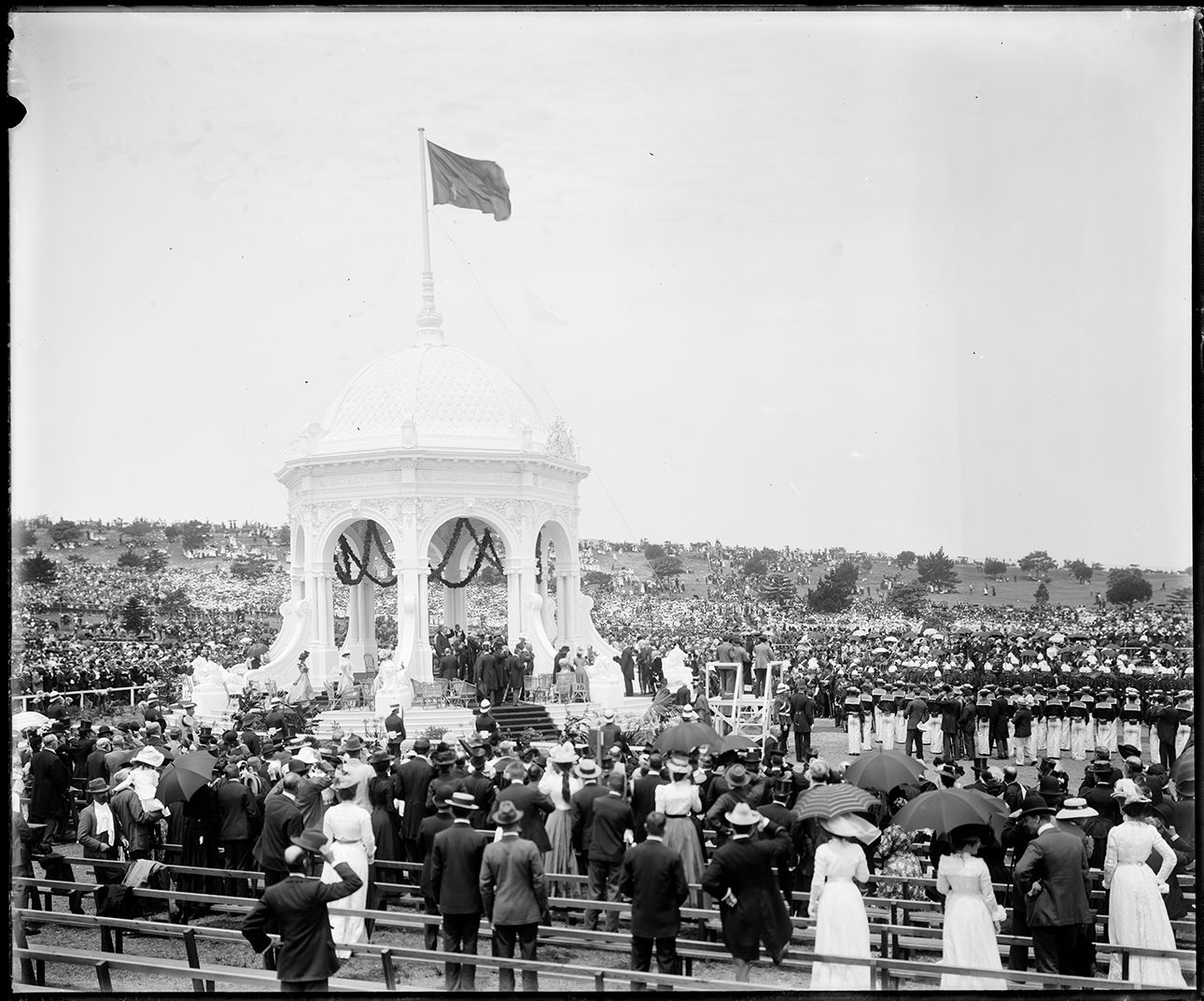
Federation of Australia - Part 1: 1840-1879
The process to federate the six Australian colonies into the Commonwealth of Australia took over fifty years from its beginnings in the 1840s
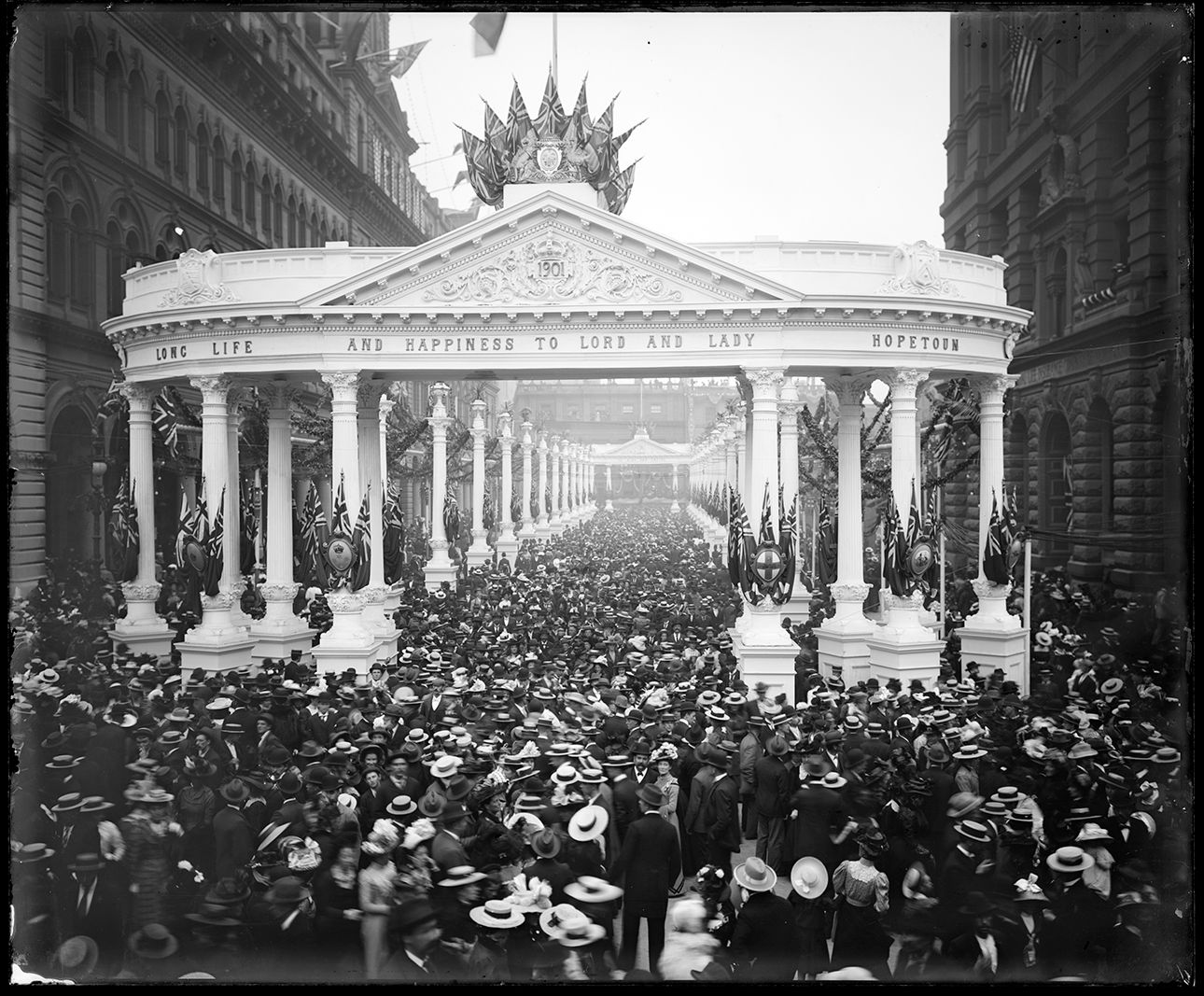
Federation of Australia - Part 2: 1880-1900
The 1880s proved to be 'the turning point at which the 'federal idea' found in all the schemes of the previous forty years would be transformed into the Federation movement'

Celebrating federation
The Commonwealth of Australia was proclaimed on 1 January 1901. The Federation Pavilion in Sydney’s Centennial Park was the focus of the inauguration ceremonies and a five mile procession through the decorated streets of Sydney was greeted by large crowds
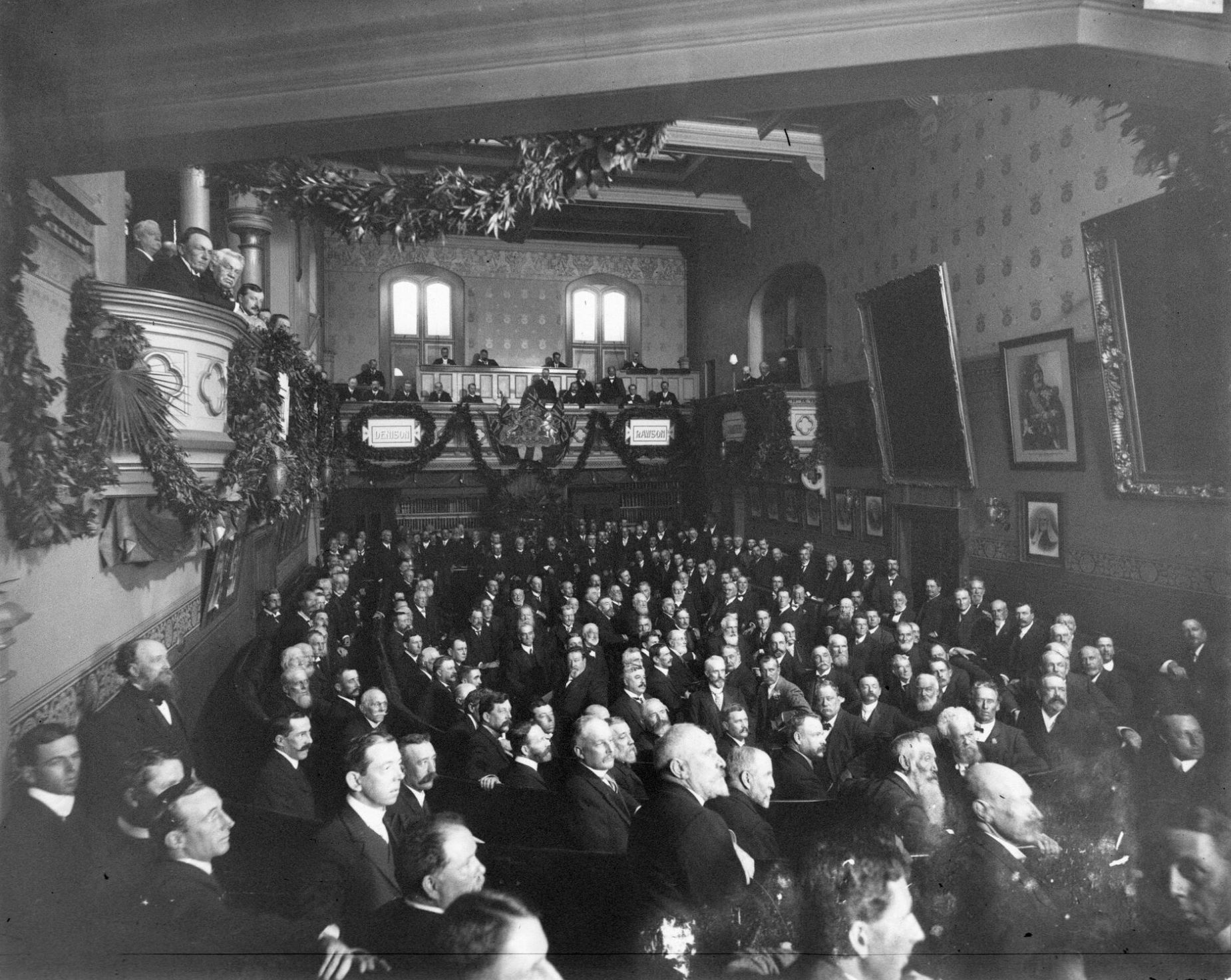
Responsible Government guide
Responsible government shifted responsibility from the Imperial Parliament and its colonial representatives to local decision making